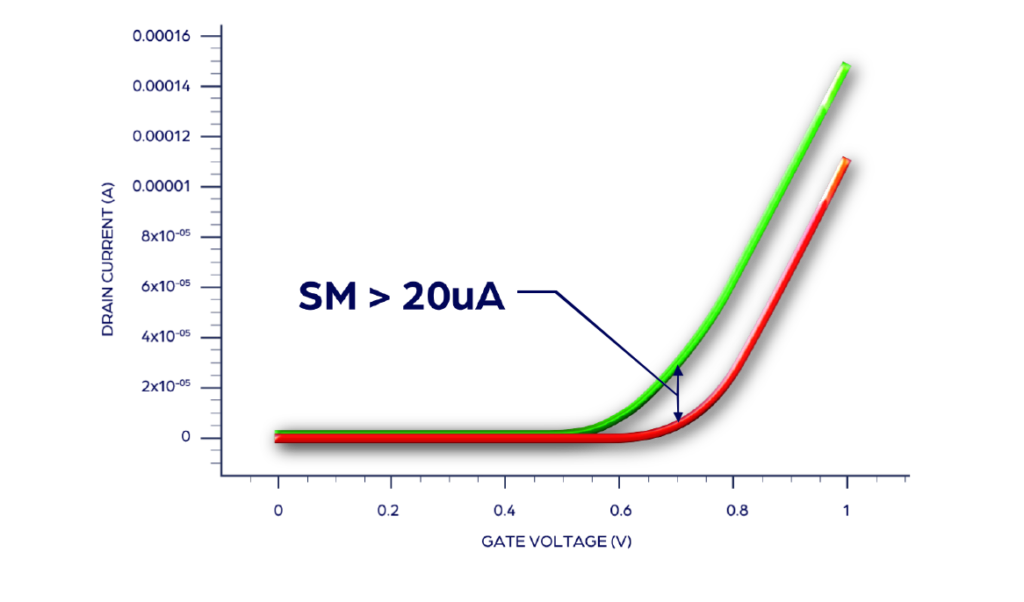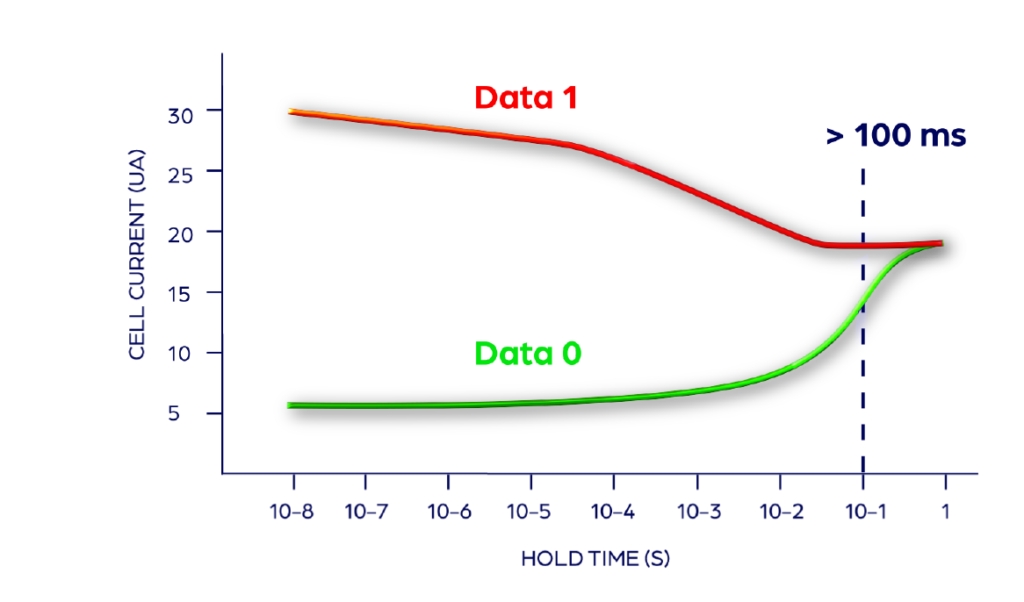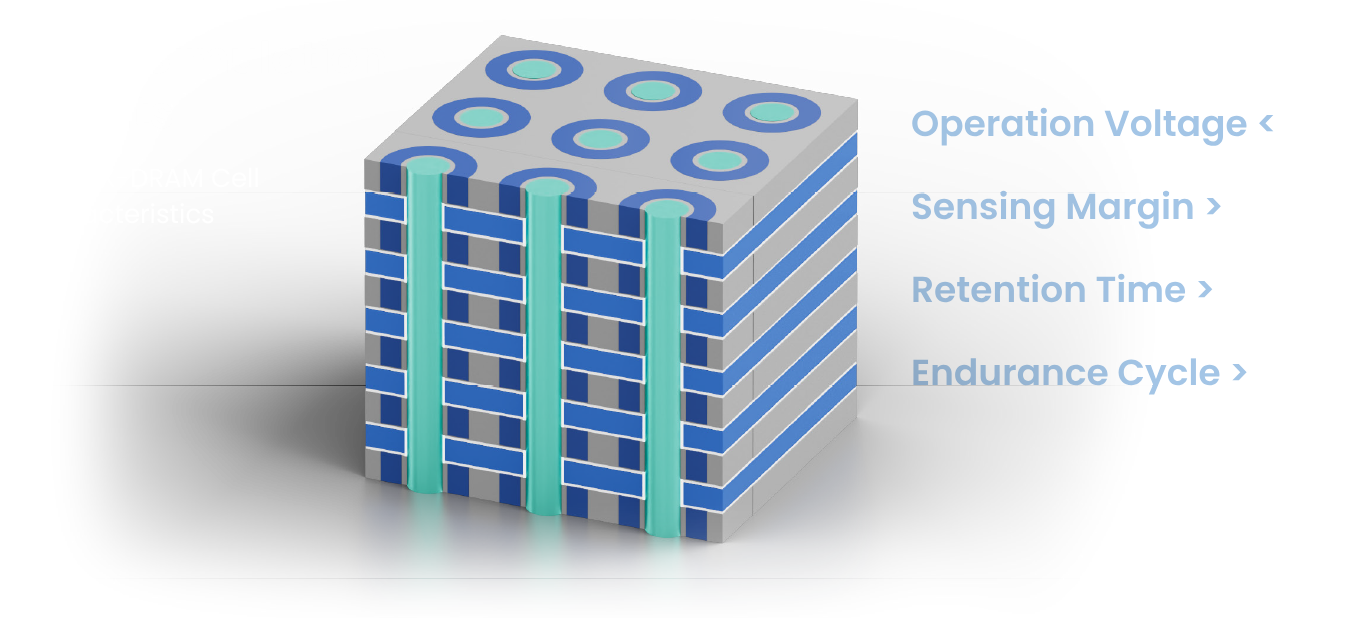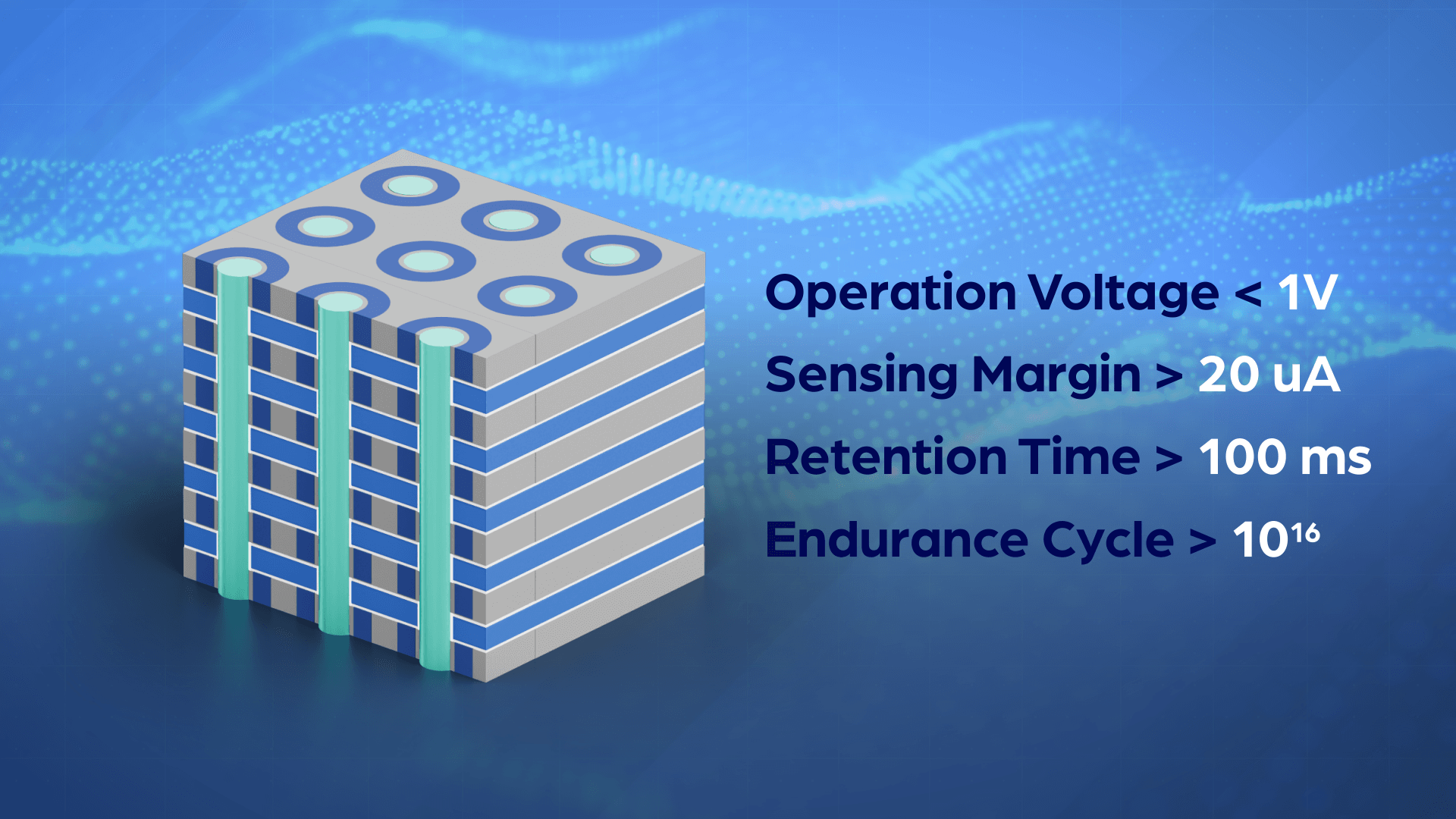3D X-DRAMTM TCAD
Simulation Data
3D X-DRAM is a revolutionary 3D DRAM technology based on a floating body cell with a 3D NAND-like cell structure. It has a dual-gate, thin body structure that can deliver high sensing margins, long retention time, and high endurance cycles based on TCAD simulations.
Data 1
High current
Data 0
Low current

Technology Computer-Aided Design (TCAD) is utilized in optimization of 3D X-DRAM cell structure and operations. The cell is written with data 1 using impact ionization and data 0 using forward bias condition.
TCAD simulation
Write 1 Operation
TCAD simulation shows write 1 operation using impact ionization. Front gate and bit line are applied with 0.7V and 0.6V, respectively, to trigger impact ionization to inject electric holes into the floating body in 3 ns. Back gate is applied with -1V to attract electric holes. The holes stored in the floating body will increase body potential to increase the cell’s read current. This state represents data 1.

TCAD simulation
Write 0 Operation
TCAD simulation shows write 0 operation using forward bias condition. Front gate and back gate are both applied with 1V to couple up the potential of the floating body. Bit line is applied with 0V to. create a forward bias current to extract electric holes from the floating body to the bit line in 1 ns. This will reduce the body potential to reduce the cell’s read current. This state represents data 0.

Sensing Margin
Simulation
TCAD simulations shows 3D X-DRAM is higher than 20 uA. This high margin allows the cell to achieve high read speed and reduce data error rate.

Retention Time Simulation (85oC)
TCAD simulation shows 3D X-DRAM cell’s dual-gate structure can effectively increase the retention time to be longer than 100 ms under 85 degrees C. This meets DRAM requirement.

Write Condition Simulation
TCAD simulation shows the required voltage for write 1 operation is below 0.6V. This can reduce hot-carrier degradation to improve cell endurance. Based on the research, 3D X-DRAM can achieve more than 1016 endurance cycles to meet the DRAM requirement.



